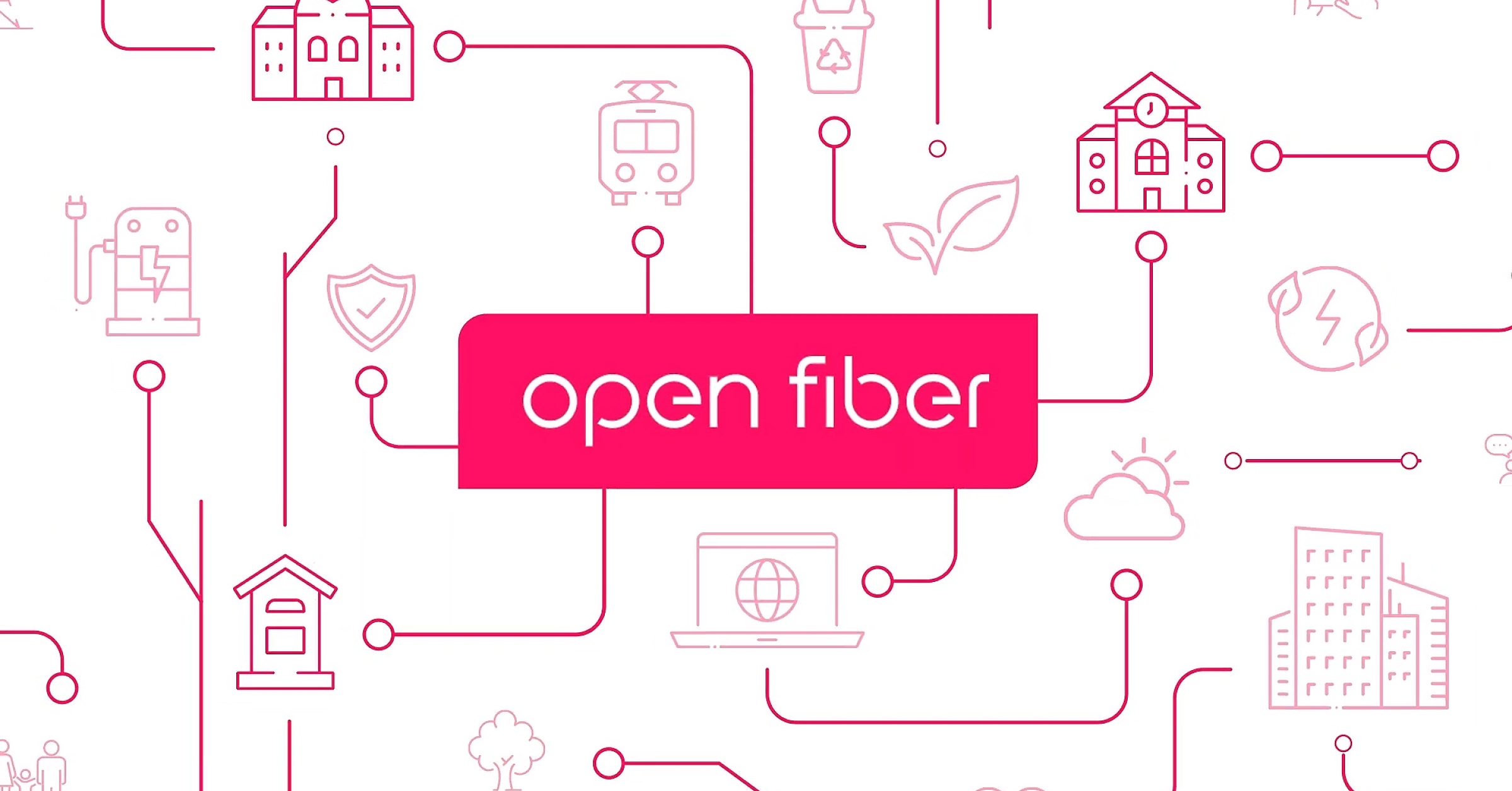FTTH fibre optic technology forms the backbone of smart cities, urban environments where traffic management and mobility are handled sustainably.
Beyond being an enabling factor for high-level digital services, like remote working, telemedicine and distance learning, FTTH fibre optics contribute to the sustainable development of cities. In fact, a network like that of Open Fiber acts as driving force powering sustainable mobility, contributing to the implementation of innovative solutions for public transport, e-mobility and intelligent traffic management.
Let us explore one of the key aspects of the ecological transition and the role of FTTH fibre optics in this context.
The importance of FTTH fibre optics for sustainable mobility
Making transport and mobility infrastructure more sustainable is a crucial goal, as highlighted by the PNRR (National Recovery and Resilience Plan). Specifically, Mission 2 and Mission 3 of the plan focus on “Infrastructure for Sustainable Mobility”, aiming to complete a modern, digitised and sustainable infrastructure system by 2026. To achieve this ambitious goal, a significant portion of the investments has been allocated to intermodality and integrated logistics, with a particular emphasis on digitalising transport networks.
According to the 2022 Transport and Environment Report by the European Environment Agency, digital technologies play a key role in the transition towards more sustainable mobility, as they help reduce air and noise pollution. Furthermore, the ability to analyse and process the vast amount of data generated by the mobility sector allows for enhanced transport safety and efficiency.
Ultrafast infrastructure, such that offered by FTTH fibre optics, is essential for developing smart cities, where urban mobility management relies on real-time data exchange and analysis from strategically placed sensors (e.g. at traffic lights or intersections). This data is processed using artificial intelligence systems to optimise the entire transport network, both public and private. In this context, each infrastructure component can communicate with the others, enabling a continuous flow of information that improves overall efficiency.
The advantages of the FTTH network for e-mobility
Electric mobility is closely linked to sustainability thanks to its clear advantages: zero smog emissions and lower resource consumption compared to traditional vehicles. This sector can be further strengthened through the integration of network connectivity in the electric charging infrastructure, which enables a range of services aimed at making the mobility sector more efficient and safer.
Some of the main benefits include:
- Remote monitoring of charging stations: thanks to fibre optics, electric charging stations can be managed without the need for physical intervention on site, increasing operational efficiency
- Optimising consumption: the FTTH fibre optic network enables the implementation of advanced strategies to intelligently manage energy use, improving overall energy efficiency
- Increased security: the interconnection of the electricity grid allows real-time software updates for mobility systems, ensuring a consistently secure and up-to-date technological environment
- Transaction tracking: with an interconnected network, electronic payments become more secure and transactions are easily traceable, promoting transparency and security in financial operations.
FTTH fibre optics for public transport and traffic management
The benefits listed above can also be applied to public transport, a vital system in a modern city. A fibre optic infrastructure allows real-time data exchange and services that enhance local transport and enable intelligent traffic planning:
- Automation of substations, providing better control of tunnels and auxiliary systems in railway traffic
- Optimisation of the urban transport network, as well as the user experience on board
- Analysis of energy consumption of transport networks to develop strategies for intelligent use of resources
- Predictive management of traffic flows, helping to reduce road congestion
- Real-time updates for users, such as free parking nearby, traffic jams, alternative routes and air quality
- Increased efficiency of autonomous driving vehicles, whose operation relies on data exchange with the surrounding environment
To date, FTTH fibre optics remain the only technology capable of supporting a data exchange system without loss of power or speed. The rollout of Open Fiber’s ultrafast infrastructure continues. Check if we have already reached your area on our dedicated page.










